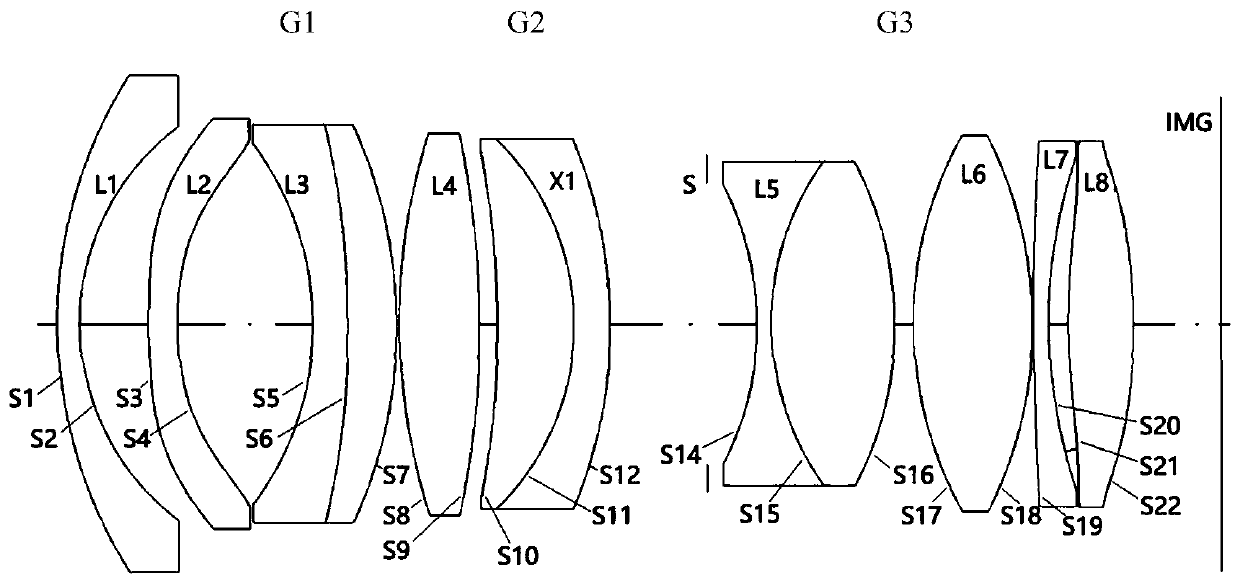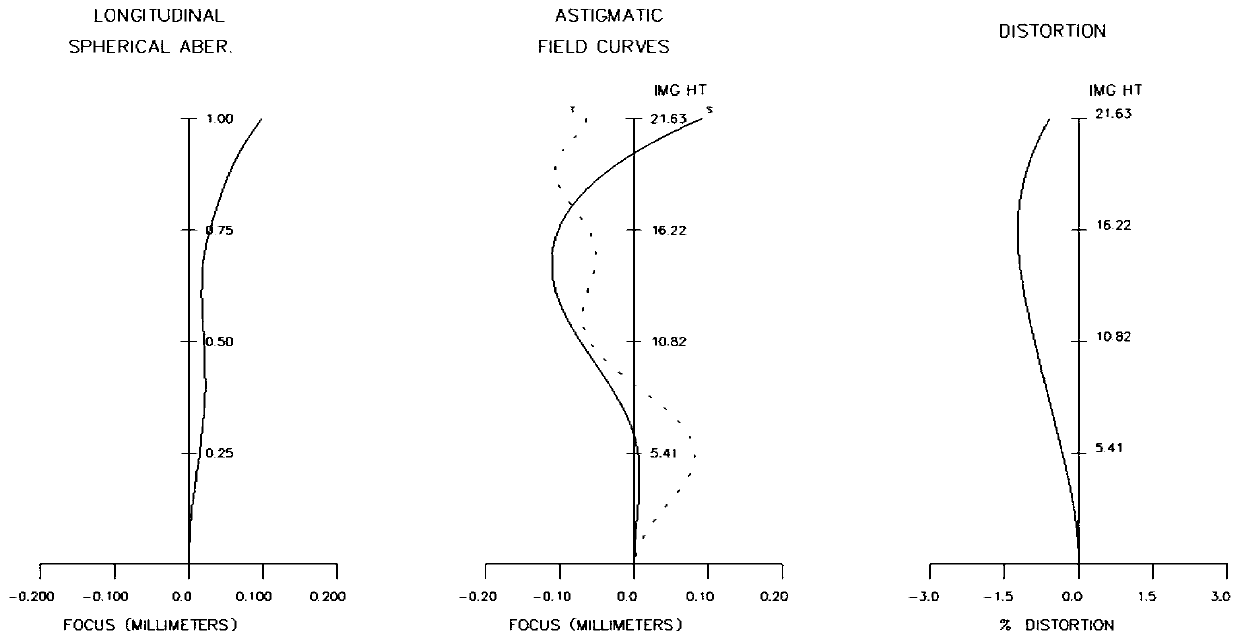Wide Angle Interchangeable Lens
A technology of interchangeable lenses and wide-angle, applied in optical components, instruments, optics, etc., can solve the problems of inability to match the use of cameras, low resolution, and inability to meet the needs of video and movie shooting.
- Summary
- Abstract
- Description
- Claims
- Application Information
AI Technical Summary
Problems solved by technology
Method used
Image
Examples
Embodiment 1
[0031] Such as figure 1 As shown, this embodiment includes a first lens group G1, a second lens group G2, and a third lens group G3 that are sequentially arranged from the object side to the image side, wherein: the first lens group G1 includes the first lens group G1 with negative refractive power. The lens L1, the second lens L2 with negative refractive power, the third cemented lens L3 with negative refractive power and the cemented surface convex toward the image side, the fourth lens L4 with positive refractive power; the second lens group G2 includes The cemented lens X1 with positive refractive power and the cemented surface convex toward the image side; the third lens group G3 includes the stop STP, the fifth cemented lens L5 with negative refractive power and the cemented surface facing the image side, and the first cemented lens with positive refractive power. Six lenses L6, a seventh lens L7 with negative refractive power, and an eighth lens L8 with positive refractiv...
Embodiment 2
[0044] The overall focal length of the wide-angle interchangeable lens in this embodiment is EFL=24mm, TNO=1.55 (TNO is the aperture value after calculating the transmittance of the lens), where: the second lens group G2 uses two separate lenses, the overall focal length is positive .
[0045] The lens structure parameters of this embodiment are as follows
[0046]
[0047]
Embodiment 3
[0048] The specific aspheric coefficients of the lens in Embodiment 3 are as follows:
[0049]
[0050]
[0051] Table 6
[0052] POS1 POS2 D0 INF350 FOV 41.9541.04
[0053] The process of changing from POS1 to POS2 is the process of changing the object distance from infinity to the closest photographing distance. FOV is the field of view of the lens. When changing, FOV only changes 2.2%, and the breathing effect is weak.
[0054] In this embodiment, the distance from the diaphragm to the center of the front lens L1=7.29, the distance from the diaphragm to the center of the rear lens L2=5.99, L1-L2=1.3; optical back focus BFL=34.67, overall focal length EFL=24, BFL / EFL =1.44; focal length F of the first lens group G1 G1 =77, overall focal length F=24, FG1 / F=3.21.
PUM
 Login to View More
Login to View More Abstract
Description
Claims
Application Information
 Login to View More
Login to View More - R&D
- Intellectual Property
- Life Sciences
- Materials
- Tech Scout
- Unparalleled Data Quality
- Higher Quality Content
- 60% Fewer Hallucinations
Browse by: Latest US Patents, China's latest patents, Technical Efficacy Thesaurus, Application Domain, Technology Topic, Popular Technical Reports.
© 2025 PatSnap. All rights reserved.Legal|Privacy policy|Modern Slavery Act Transparency Statement|Sitemap|About US| Contact US: help@patsnap.com



